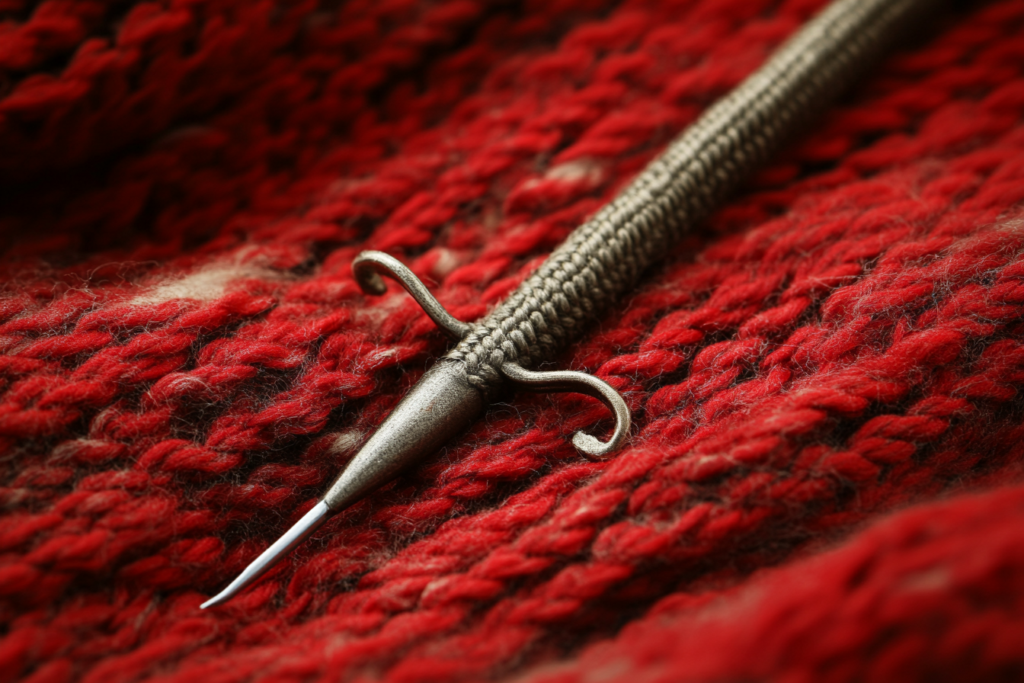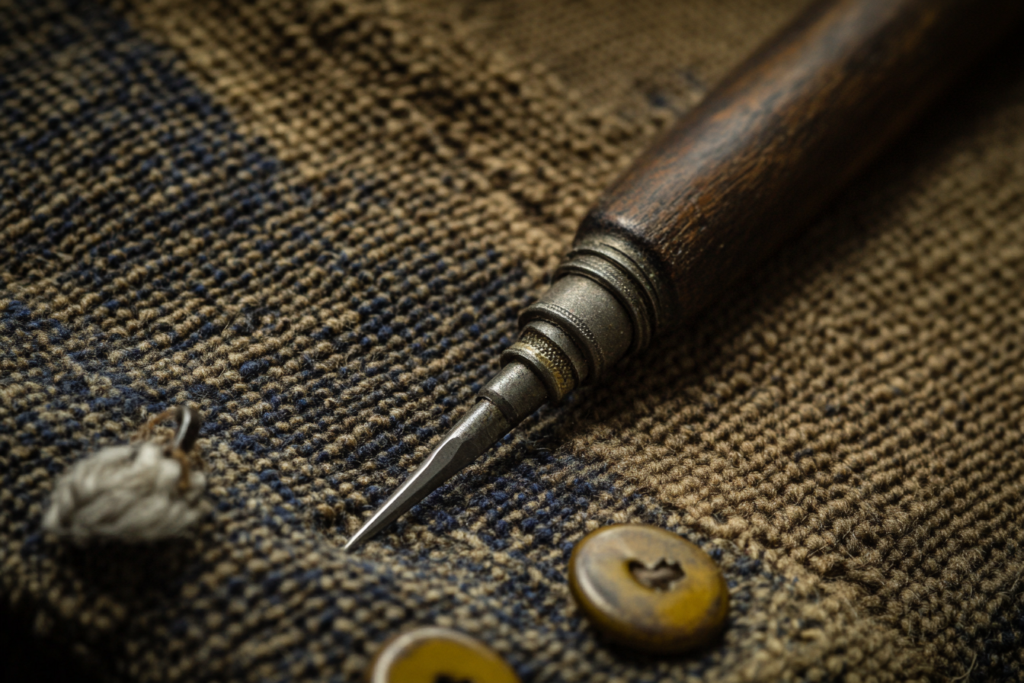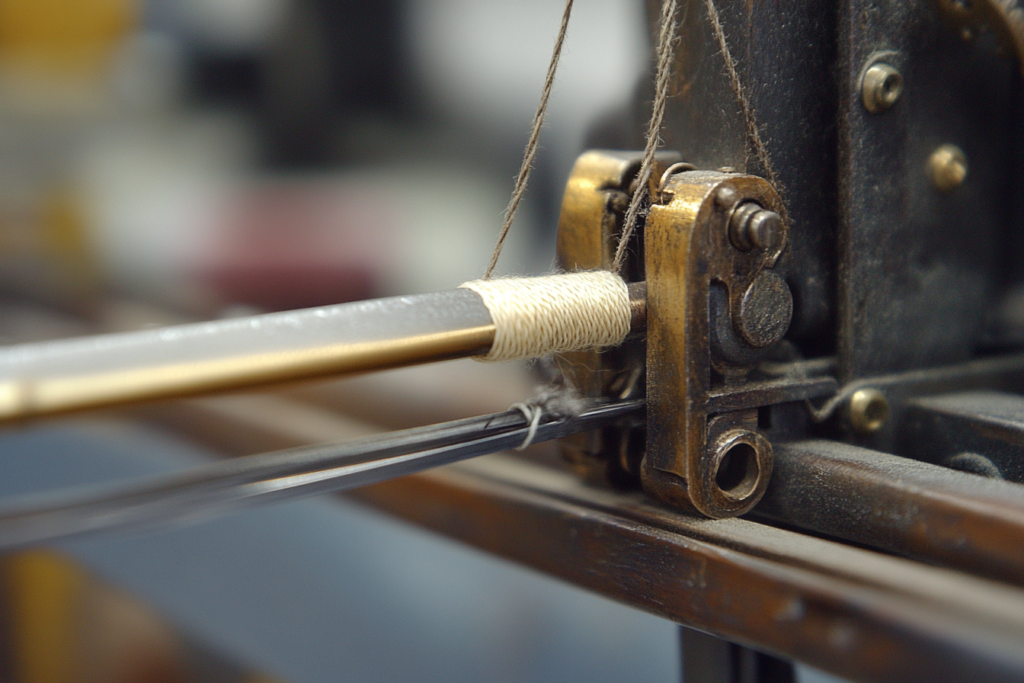Latch-Hook Needle: A Revolutionary Tool in Weft Knitting
Meta Description: The latch-hook needle, patented in the 19th century, remains essential in weft knitting machines today. Learn about its function, history, and role in textile production.
What is a Latch-Hook Needle?
A latch-hook needle is a specialized knitting tool with a built-in latch that allows yarn to be looped and interlocked automatically, forming knitted fabric. Patented in the 19th century, this innovation revolutionized weft knitting and is still used in modern knitting machines today.
The latch-hook needle is crucial for high-speed knitting production, offering efficiency, flexibility, and precision in fabric construction.


Key Features of the Latch-Hook Needle
✔ Automatic Loop Formation – The movable latch helps the yarn pass through loops seamlessly.
✔ Patented in the 19th Century – A long-standing innovation in knitting technology.
✔ Used in Weft Knitting Machines – Found in circular, flatbed, and warp knitting machines.
✔ Improves Efficiency & Consistency – Speeds up knit fabric production.
✔ Works with Various Yarn Types – Used for cotton, wool, synthetic, and blended yarns.
The History of the Latch-Hook Needle
1. 19th Century: The Invention & Patent
- The latch-hook needle was patented in the 1800s, revolutionizing machine knitting.
- Before this, knitting machines used bearded needles, which required manual operation.
- The self-acting latch mechanism allowed for continuous knitting, greatly improving efficiency.
2. 20th Century: The Growth of Weft Knitting
- With the rise of industrial textile production, latch-hook needles became standard in knitting machines.
- The technology allowed for mass production of knitwear, hosiery, and stretch fabrics.
3. 21st Century: Still Essential in Modern Machines
- Despite advancements in computerized knitting, latch-hook needles remain a core component in high-speed textile production.
- Used in automated knitting systems, fashion manufacturing, and technical textiles.
How a Latch-Hook Needle Works in Weft Knitting
1️⃣ The latch opens as the needle moves upward.
2️⃣ The new yarn is fed into the hook.
3️⃣ As the needle moves downward, the old loop forces the latch to close.
4️⃣ The new loop is pulled through the old loop, forming a knitted stitch.
5️⃣ The process repeats, creating continuous knit fabric.
💡 Advantage: Unlike bearded or spring needles, latch-hook needles self-lock, reducing errors and allowing for smoother, faster knitting.
Where Are Latch-Hook Needles Used?
📌 Weft Knitting Machines – Essential for circular and flatbed knitting.
📌 Knitwear Manufacturing – Used in T-shirts, sweaters, and seamless garments.
📌 Hosiery & Sock Production – Ensures stretchability and fine knit detail.
📌 Technical Textiles – Applied in sportswear, medical textiles, and industrial fabrics.
📌 Automated & Computerized Knitting Systems – Integrates with modern knitting technologies.
Latch-Hook Needle vs. Other Knitting Needles
| Feature | Latch-Hook Needle | Bearded Needle | Compound Needle |
|---|---|---|---|
| Loop Formation | Uses a movable latch to close loops | Requires pressing the beard for loop formation | Uses a slider to control loop formation |
| Automation Level | Self-acting, fast | Manual or semi-automatic | Fully automatic, high-speed |
| Best For | Weft knitting, circular and flatbed machines | Older knitting machines, historical use | Advanced warp knitting, high-tech fabrics |
| Efficiency | High | Medium | Very High |
The latch-hook needle remains dominant in weft knitting, while compound needles are used for technical and warp knitting applications.
Why Are Latch-Hook Needles Still Used Today?
✔ Fast & Efficient – Supports high-speed knitting production.
✔ Consistent Stitch Quality – Produces even, reliable fabric loops.
✔ Compatible with Many Fabrics – Works with cotton, wool, synthetics, and more.
✔ Reliable & Long-Lasting – Proven durability in textile manufacturing.
✔ Essential in Automated Knitting – Used in modern industrial knitting machines.
Conclusion: The Lasting Impact of Latch-Hook Needles
The latch-hook needle revolutionized knitting technology in the 19th century, and its impact continues today. As an essential component in weft knitting machines, it enables fast, precise, and high-quality fabric production, making it a cornerstone of the textile industry.
From classic knitwear to cutting-edge fabric innovations, the latch-hook needle remains a crucial tool in modern manufacturing, proving that some inventions truly stand the test of time.



